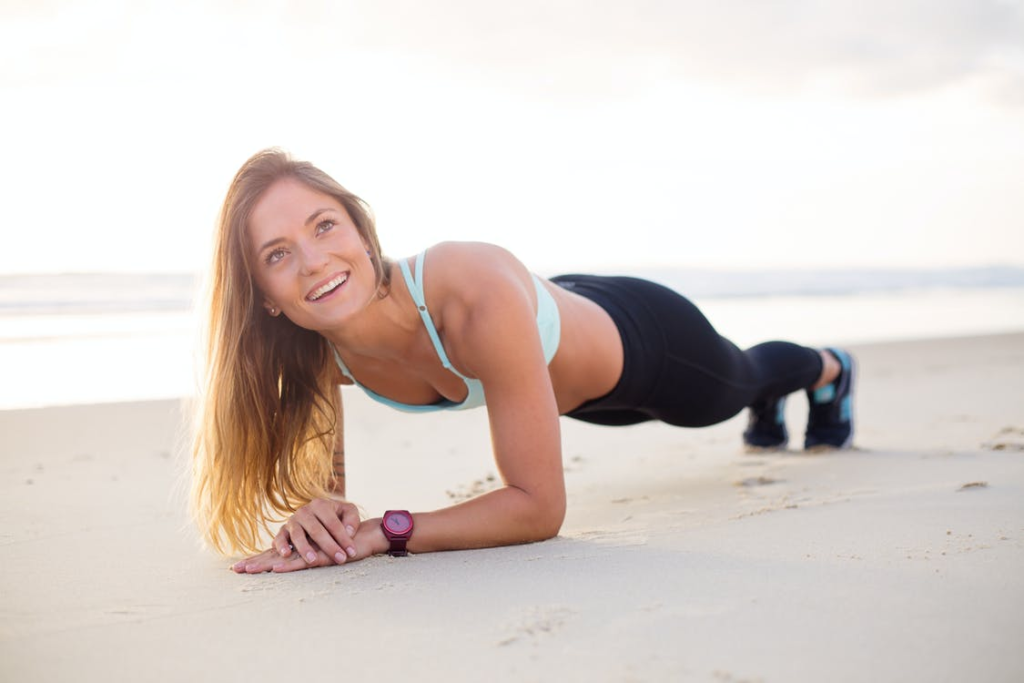The best part about being a beginner in the fitness world is discovering what your body is capable of. Most humans are in the pursuit of bigger and better, which awakens a fire in them. They are then motivated to challenge their limits.
A way to challenge yourself, especially if you’re a fitness beginner, is calisthenics. Calisthenics is bodyweight exercises. It works with the relationship between your weight and gravity. You’ll incorporate balance, flexibility, and agility to build strength in your body.
Calisthenics: Workout for Beginners
In a fast-paced, mobile, and time-pressed culture, it’s important to have options in workouts that you can do anywhere and anytime with little to no equipment. That’s the beauty of calisthenics; it provides many opportunities to work out and is beginner-friendly to boot.
Many calisthenics exercises are straightforward. If you’re new to fitness or just looking for something without weights beginning with calisthenics is the right way to go. It’ll also help you learn the correct form for the exercise. Here are some calisthenics exercises to get you started.
1. Squats
Squats are the most natural yet forgotten form of exercise. Look at a child, and they’ll squat on the ground to play and stay there for a long time. Fast forward, you’re an adult and can’t even figure out your form, let alone stay in that position for a long time.
The correct form of squat involves keeping your feet on the ground. The point where you can’t get lower without lifting your heels is the point you should stop in this position. Over time add more depth so you can increase strength and flexibility.
In calisthenics, you won’t have the heavy load of weights, so it isn’t necessary to keep your back straight. Instead, go with what feels natural. For the full range of motion, your hamstrings should meet your calves, but if you can’t maintain a strict form, try partial reps.

2. Lunges
Everyone hates leg day because common leg exercises tend to hurt a lot. They can’t walk right for the next few days, and your thighs look huge, which you never wanted.
However, you don’t have to dread it. Try an easy and useful leg workout in calisthenics like bodyweight lunges!
Lunges improve lower body strength and are also important from a physiological standpoint. There are also benefits to doing lunges other than just strengthening legs. It shapes your body as well.
Lunges are easy to do. You take a step forward, dip your body on the floor while bending at the knees. The knees should reach the bottom. You then either return to your standing position or go into a walking lunge.
3. Planks
Beginner or progressed to an advanced level, planks should be a part of your calisthenics routine. It is a fantastic exercise to build core strength. It works all your core muscles and is great for a strengthening routine to build muscle tone.
For the correct plank position, you need to lie on the floor with your forearms flat against the ground. Your elbows should be underneath your shoulders for the proper form. Ensure your body is straight and your toes are touching the ground.
Remember to work your muscles by keeping them (abdominal muscles) tight and strong. Don’t let yourself bend at the waist or down.

4. Dips
The dip is one of the best exercises you can do for the chest and triceps. Just make sure to get the dipping technique down right. And no, we don’t mean the chip to guacamole ratio you’ve probably perfected.
For a dip, you need an elevated surface that at least reaches the height of your knees. Lean on it, shoulder-width apart. Start the dip by letting your body down at a 90-degree angle. This is what we call a dip movement. Don’t forget to keep your legs straight.
5. Push-Ups
A push-up is the most common movement you would have seen people do at the gym or outside of it. It’s the perfect calisthenics exercise because it requires nothing but your body weight.
Push-ups are another great exercise for building core strength and working the upper body. If you’re a complete beginner, you can start by doing it on your knees or with your hands against the wall. You can progress to more advanced variations as you get better.

6. Jumping Jacks
If the last time you did jumping jack was in school, time to get re-acquainted with this classic. It’s a convenient and accessible form of exercise. It works on many muscle groups, but mainly it works on glutes, quads, deltoids, and hip flexors.
It’s also easy to do. Start by standing with your legs together and hands resting on the thighs. Keeping them bent, open your arms, and legs out the sides. Finally, return to your original position.
7. Crunches
Crunches are the smartest way to train abs. Like planks, this exercise strengthens your core muscles. Start in the supine position, curl your shoulder towards your pelvis while your lower back is flat on the ground. Bend until your arms touch your thighs.

Learn More with Our Calisthenics Training Expert and Author
Calisthenics is an art form that can be beneficial in multiple ways. Neuroscience calisthenics training takes it a step further by helping you biohack your body and take more advantage of the fitness regime. If you’re interested in learning more tips on how to train like a cyborg that stays young, you can follow serial entrepreneur and biohacking expert Jean Fallacara.
Moreover, you can also read his book Neuroscience Calisthenics: Hijack Your Body Clock to know how anti-aging biohacking works. Reach out to us for more details on neuroscience calisthenics strength training to slow down your body’s aging clock!
